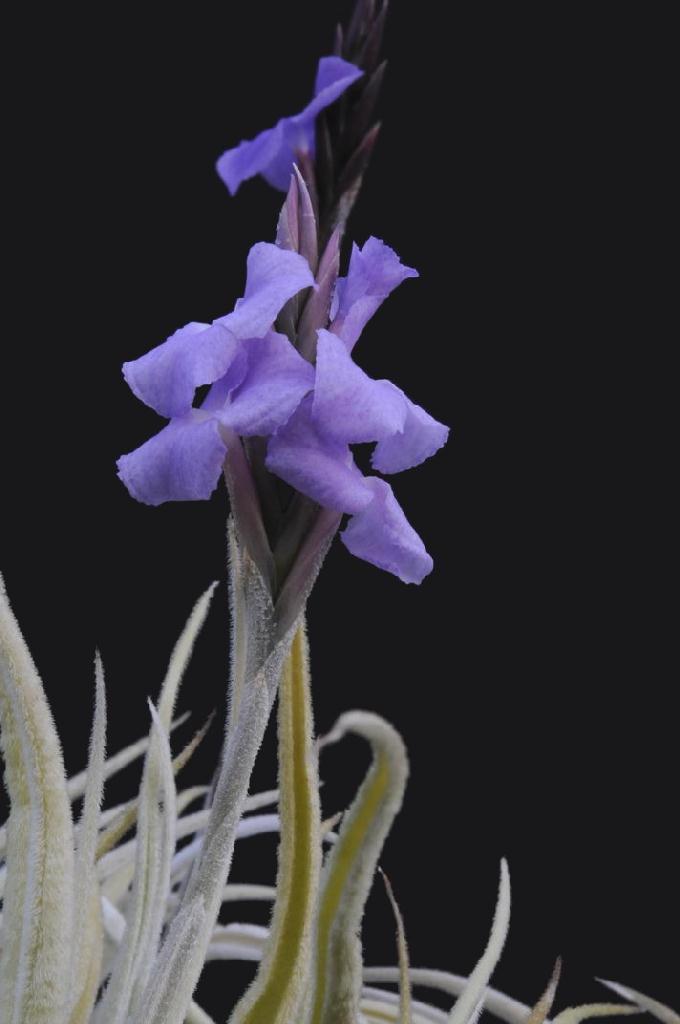

Tillandsia santiagoensis f. santiagoensis ("Sukk weiss" or ‘Chicitos Weiss’)
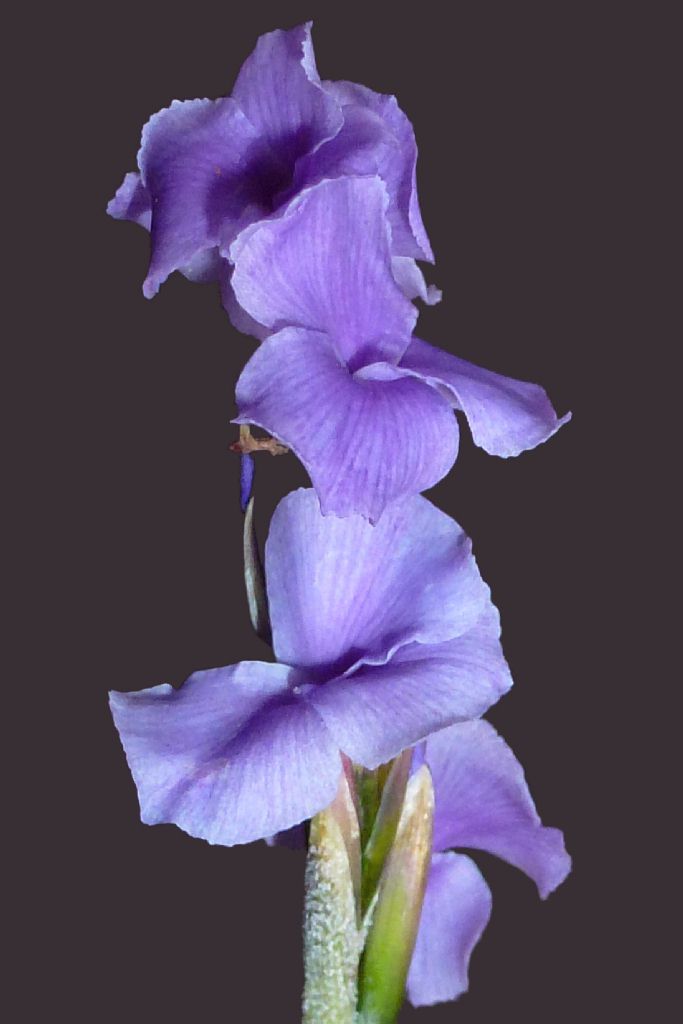

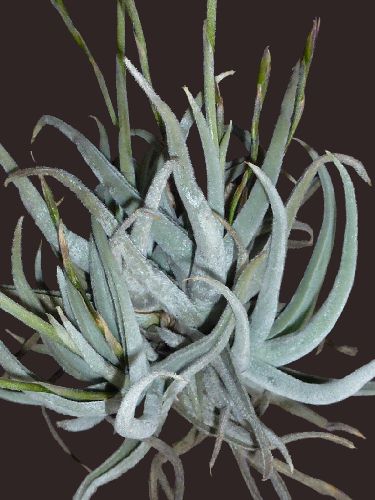

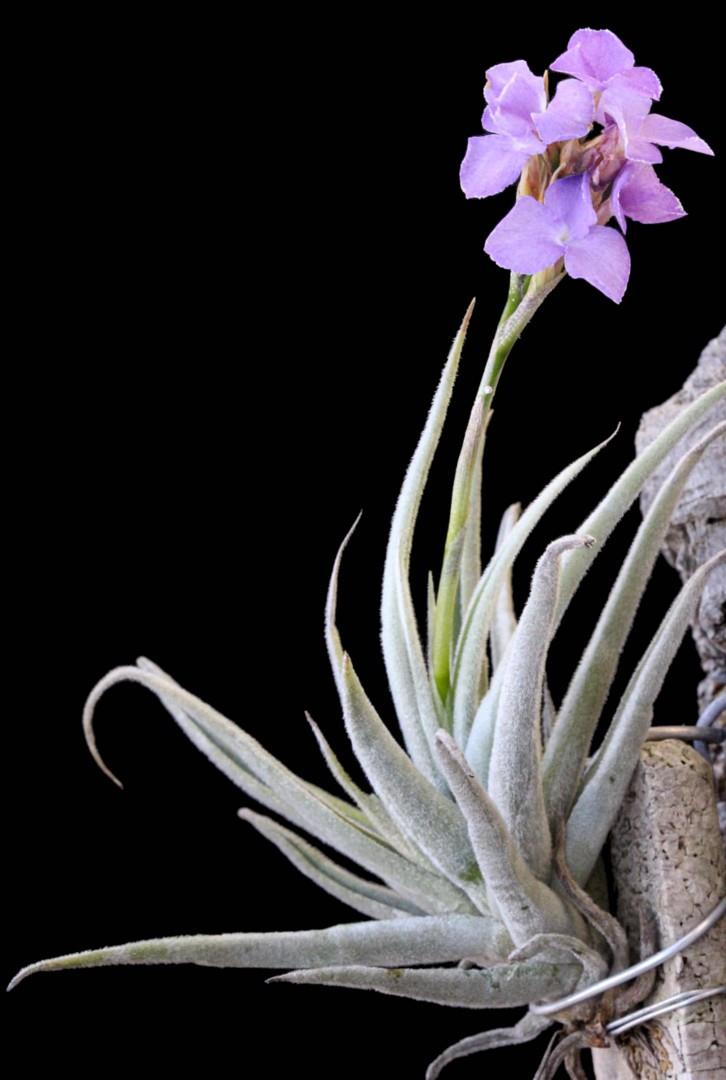


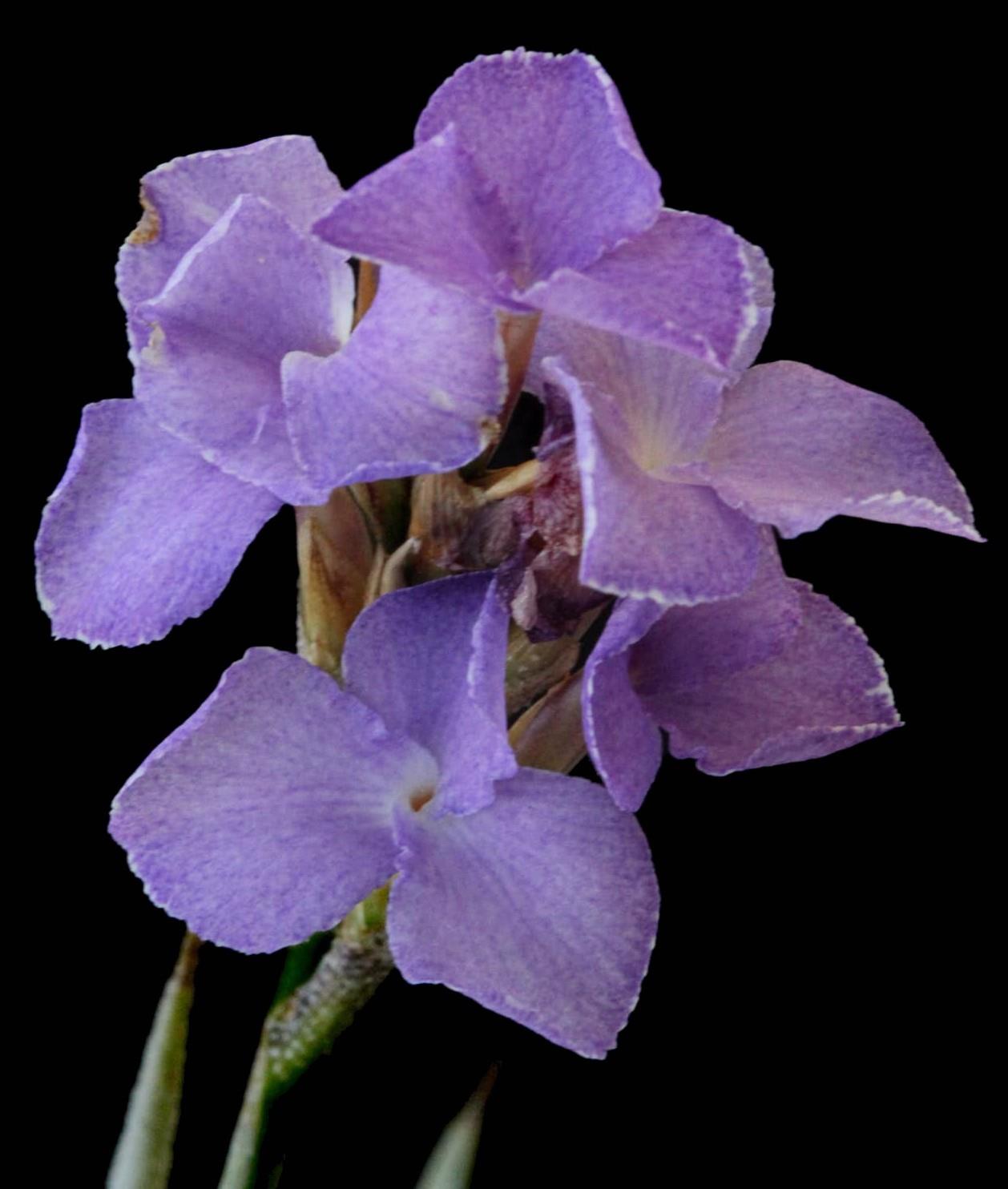
T. santiagoensis f. adpressa ("Sukk grun" or ‘Chicitos Grun’)



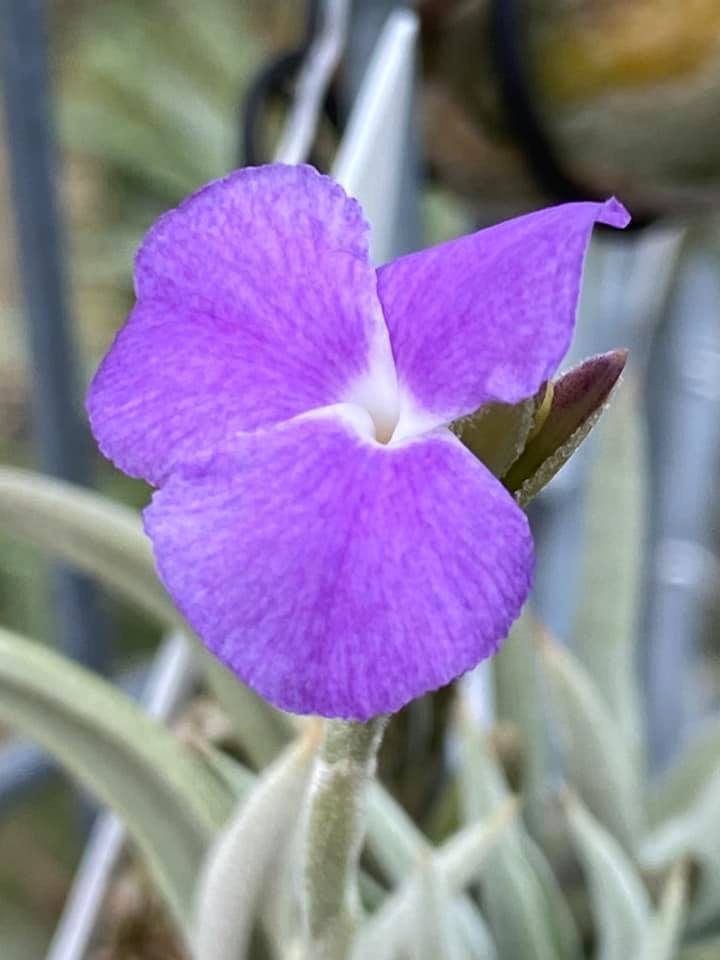

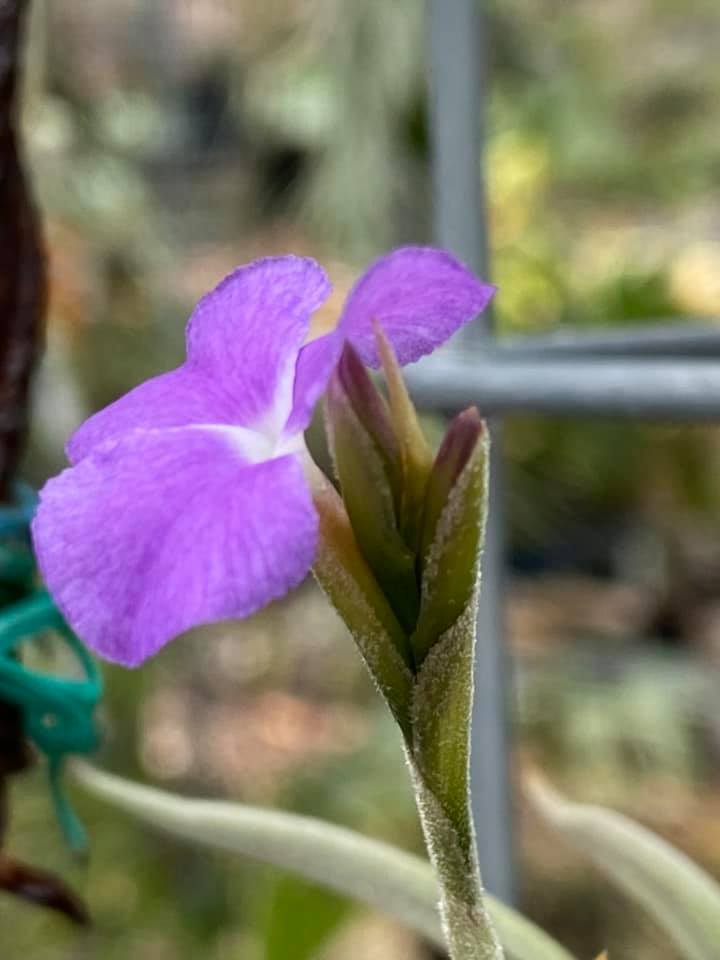
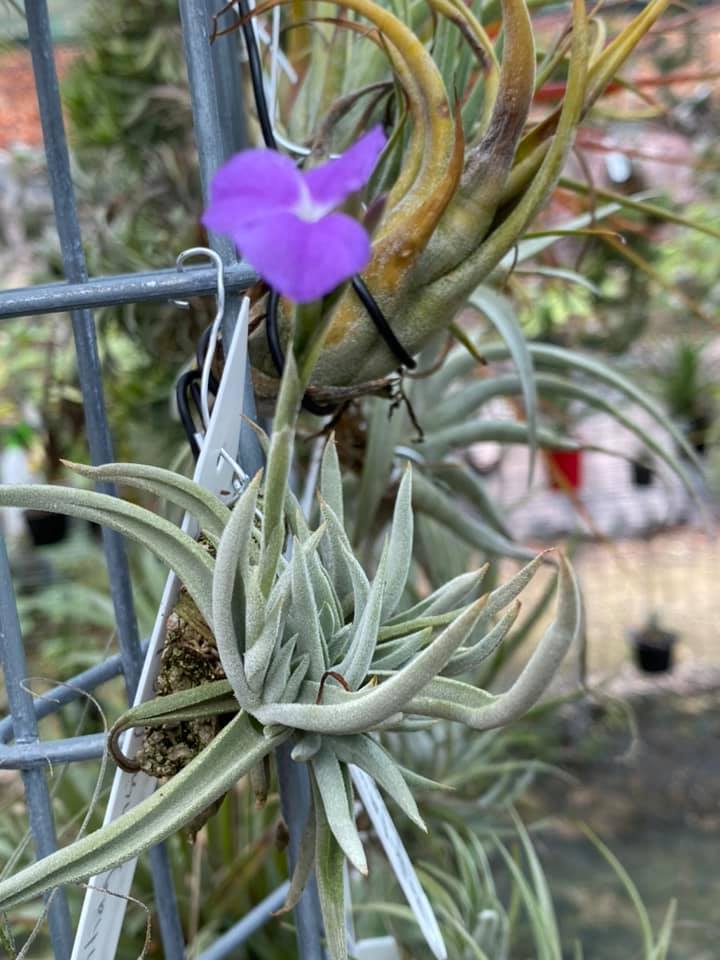

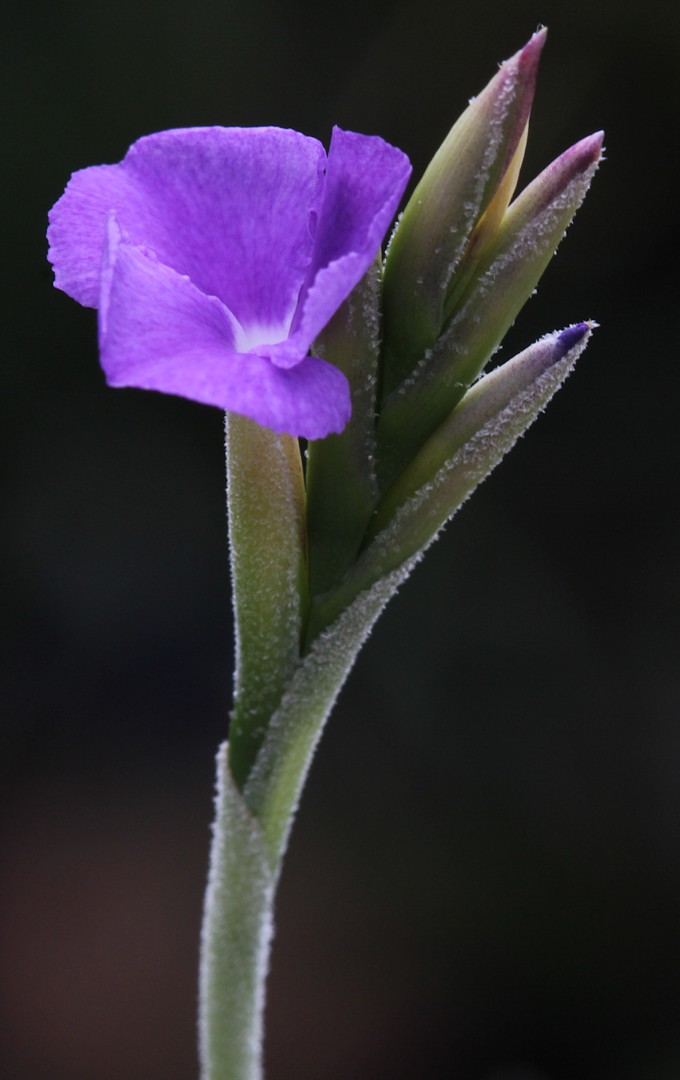

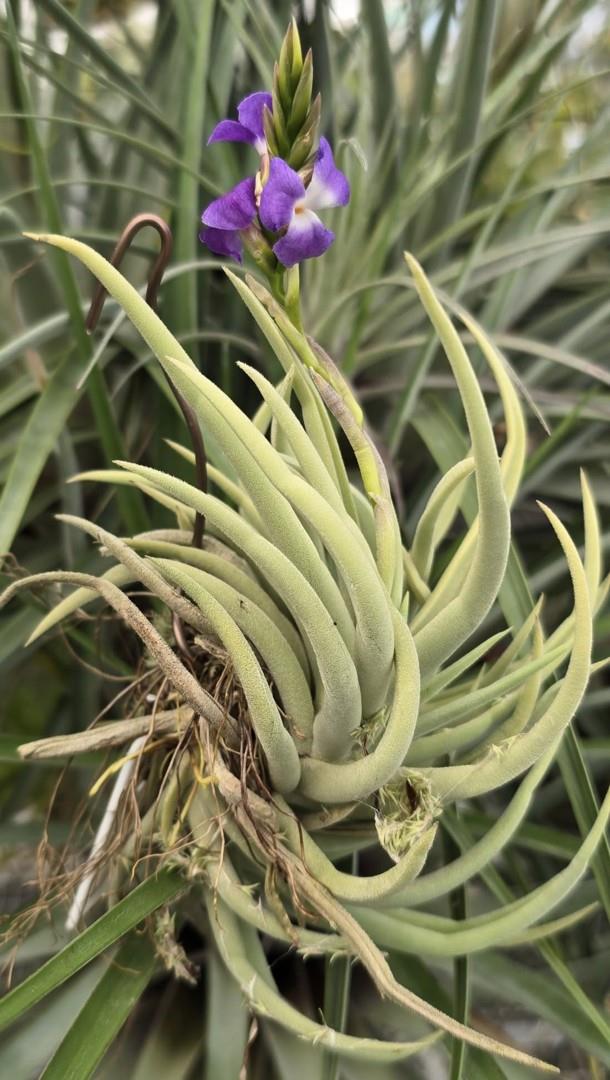
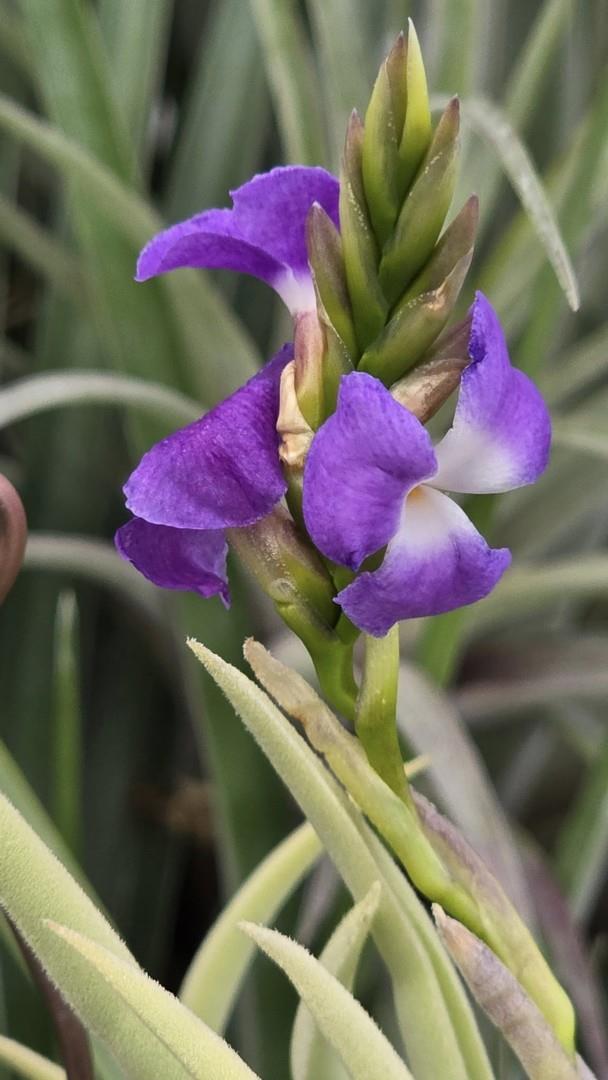
Tillandsia santiagoensis H. Hromadnik and L. Hromadnik Sp nova. Die Bromelie 2020 (#2) 82-89. 2020
The Sierra (Serrania) de Santiago in Bolivia is an extended mountain range that begins 360 km east of the city of Santa Cruz de la 5ierra and rises as a single mountain range over the vast lowlands of the northern Gran Chaco. This lowland, which occupies a large part of the state of Santa Cruz, is bordered in the west by the foothills of the Andes and extends at an average height of 350 m above sea level far beyond the border with Brazil. There, it merges into the wet-lands of the Pantanal in the Brazilian state of Mato Grosso.
At the western foothills, starting with an irnpressive rock monoIith of spectacular red sandstone, the El Porton, the extended mountain range is composed of a few separated Serranias, such as the Serrania de Cochis. Ascending from the north, the mountains reach their maximum height of 1,230 m above sea level. North of the city of Robore and near the town of Santiago de Chiquitos in the Serrania de Santiago, the high plateau of a table mountain, with sometimes huge breaks from rocky cliffs, drops in several steps to the south against the wet savannas of the lowlands. On the edges bizarre rock formations and slngle rock towers stick out, eroded by wind and water.
The Valle Tucavaca regional nature reserve is located here, which was set up in recent years to protect the bizarre landscape and the ecologically unique and endangered Chiquitano dry forest. 554 animal species living there had been identified, many of them endemic, as well as 55 endemic plant species.
ln August 2019, when large areas of Amazonia were destroyed by forest fires, the dry forest of the Valle de Tucavaca and the surrounding areas of Santiago de Chiquitos and Robore were also reported to have been victims of rampant forest and bush fires following illegal logging. Almost a million hectares of dry forest and scrubland have been destroyed, more than 1 million animals have been burned, including jaguars, pumas, tapirs, anteaters, ocelots, many of the last quanacos from the Gran Chaco and countless small animals. The number of endemic animal and plant species that were destroyed is unknown.
Already in 1982, during a trip through Bolivia, Erich Haugg, Helmut Hromadnik and Walter Till visited this mountain range far from the Andean foothills and the usual travel route since it was suspected that there could still be unknown tillandsias at this isolated locality.
Getting there turned out to be difficult. The unpaved dirt road, with its deep mud pools caused by trucks, was impasable even for large all-terrain vehicles. ln the area, however it did not seem unusual to load cars and also large agricultural machinery onto the load floor of trucks via ramps and from there onto freight wagons. ln this way it was possible cover most of the distance 'kept dry'.
ln fact, a number of interesting tillandsias were found in different mountain regions. A species resembllng Tillandsia didisticha (E. Morren) Baker has already been described as T. rosacea Hrom & W Till. ln addition, there were also other rock-growing taxa. First of all, a small tillandsia similar to T. tenuifolia L. should be mentioned, with its spirally twisted inflorescence it resembles T. rauschii Rauh & H. Lehm, or the much larger T. guelzii Rauh. Also a tillandsia, similar to T. vernicosa Baker should be mentioned, barely reaching more than 5 cm in size with its simple inflorescence.
On the rocky crests and steep steps of the towers at the end of an extended table mountain near Santiago de Chiquitos, north of the town of Robore, there is also the apparently single occurrence of a small tillandsia, which is to be presented below as a new species with two clearly distinguishable forms.
Only a local inspection could show whether and how far the plants of this locality were decimated by the flames or were spared. ln any case, on current images of the dry forest in the vicinity of the small town of Robore, there is no longer a living tree to be seen, but charred areas far up into the mountains.
Type: Bolivia, Dept. Sta Cruz, Mun. Robore, Serrania de Santiago, 5 km NE Santiago de Chiquitos, 850 m elev., lithophytic in full sun;
Holotype: H. Hromadnik HR 9183a, 26 July 1982 (LPB),
Paratype: W. Till WT131 (WU0003665), Bolivia, Dept. Santa Cruz, Serrania de Santiago, 5 km NE Santiago, plateau of the table mountain east of the road, 850 m elev.; 26 Jul 1982, on rocks in the sun.
Plant nearly stemless, growing lithophytically in small clusters, flowering 12-15 (-20) cm tall.
Leaves densely polystichous-ranked, to 12 cm long, spreading to erect and bent upwards, abaxially denseiy lepidote from velvety white spreading scales.
Sheaths distinct, broadly ovate to rounded, 12-15 mm long, 12-20 mm wide, coriaceous, nerved, somewhat brownish, adaxially glabrous except towards the apex, abaxially densely spreading lepidote except the base; the base triangular and papyraceous, membranous wings, glabrous, embracing most of the stem.
Blades narrowly triangular, stiff, succulent, spreading to erect and slightly curved upwards, 10 mm wide, involute-subulate, almost round in cross-section, merging into a soft attenuate apex, adaxially deeply canaliculate and densely appressed, lepidote, abaxially densely velvety lepidote from rigid, long and straight scales protruding downwards.
Inflorescence erect, mostly simple, seldom cornpound of a few (up to 4) subequal spikes, overtopping the leaves, 10-15 cm long.
Peduncle 6-1O cm long, 1.5-2 mm in diam., glabrous, green, internodes 26 mm, densely clasped and hidden from 6-7 peduncle bracts.
Peduncle bracts 3-3.5 mm long, 6 mm wide, papyraceous, subimbricate, abaxially densely lepidote except towards the base, adaxially glabrous, the lower subfoliate and 1.5-3 cm long, the central and upper ones lanceolate and apiculate.
Inflorescence (fertile part) a simple, distichous, complanate spike, or seldom laxly compound of 2-4 spikes with main axis internodes of 10 mm (the lower one) to 5 mm (the upper one).
Primary bracts {if more than 1 spike present) 15-20 mm long, thin, abaxially densely lepidote, enfolding the sterile bracteate base of the spikes, the stipe up to 10 cm long and appressed to the axis.
Spikes erect, distichous, strongly complanate, linear-lanceolate, 4.5-5 cm long, 7 mm wide, 6-8-flowered, internodes 7 mm.
Rhachis glabrous, geniculate, post anthesis strongly nerved and visible.
Floral bracts 12-14 mm long, 6 mm wide, lanceolate, aplculate, thin, ecarinate, nerved, glabrous except the lowest along the nerves, not completely enfolding the rhachis, dark purple to greenish-rose.
Flowers fragrant, sessile, erect, their lower part appressed to the rhachis.
Sepals 12 mm long, 4 mm wide, lanceolate, the adaxial ones carinate and connate for 1 mm, glabrous, even, rose to green.
Petals at base narrowly lingulate, 2 mm wide, white, forming a narrow tube, blades widened suborbicular to 12 mm, broadly spreading and slightly recurved, with exception of the throat (or completely) dark blue-violet.
Filaments 7 mm long, filiform, white.
Anthers 1.5 mm, yellow, basifixed, deeply included.
Pistil deeply included.
Ovary 5 mm long, green.
Style white.
Stigma white.
There is also slightly different form at the same locality, which is named as Tillandsia santiagoensis f. adpressa.
Tillandsia santiagoensis f. adpressa. H Hrom. & L. Hrom. forma nova
Type: Bolivia, Dept. Sta. Cruz, Mun. Robore, Serrania de Santiago, table mountain ca. 5 km NE Santiago de Chiquitos (east of the road), 800 m elev., 25 Jul 1982, on rocks, H. Hromadnik HR 9183 b, (Holotype LPB)
The plants show the same habit, size and inflorescence are identical, too. The leaves are succulent as well, but differ from those of the typical forrn by fine, adpressed trichomes. ln contrast to this, the plants do not appear velvety white, but gray-green to yellowish-green.
Both forms of Tillandsia santiagoensis with numerous living plants and plants from seed were in cultivation.
Habitat and distribution
Tillandsia santiagoensis is native to Bolivia, from the rock towers of the Serrania de Santiago in the north of the city of Robore and is so far only known from this locality. lt is uncertain whether and to what extent the population was decimated by the forest fires of summer 2019.
Etymology
This species is named after the place of discovery in the Serrania de Santiago.
Discussion
Tillandsia santiagoensis belongs to the complex of T. streptocarpa Baker. However, it is clearly different in habit from T. streptocarpa with similar shape and same size. While the leaf blades of T. streptocarpa are broad, flat and involute, mostly spreading rectangularly or even more, the leaves of T. santiagoensis are nearly erect and less spreading, thick succulent and subulate.
The very dense velvety trichomes, fine needle-like and directed downwards, that are found in T. santiagoensis are not present in any of the other forms of T. streptocarpa that were compared.
The inflorescence of Tillandsia streptocarpa is mostly compound of up to twelve spikes, the spikes are arched-spreading above the sterile base, rarely the inflorescence is simple, the floral bracts are shorter than the sepals. The inflorescence of T. santiagoensis is mostly simple, rarely composed of a few upright, adjacent spikes, the floral bracts are equal in length or slightly longer than the sepals. The intensive dark blue-violet colour of the blades is mostly not found within T. streptocarpa.
There is some similarity in size and the stemless rosette to the also rock-growing Tillandsia graomogulensis Silveira (Syn. T. kurt-horstii Rauh) from the state of Minas Gerais, Brazil, but with much narrower leaves densely covered by long, eccentric trichomes.
Acknowledgement
I would like to thank Dr. Walter Till (Faculty Centre of Biodiversity, University of Vienna) for his advice and the final correction of this article.